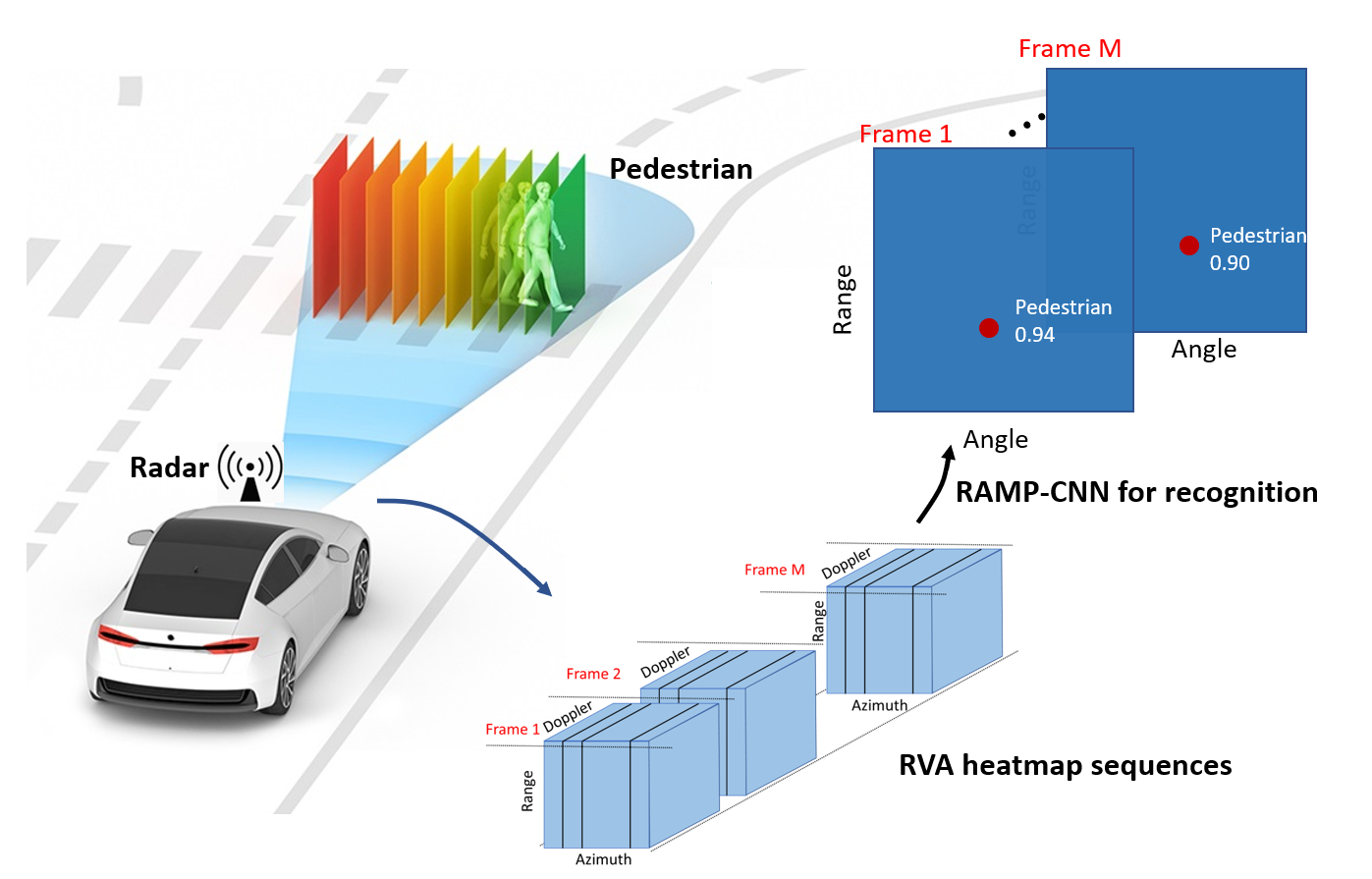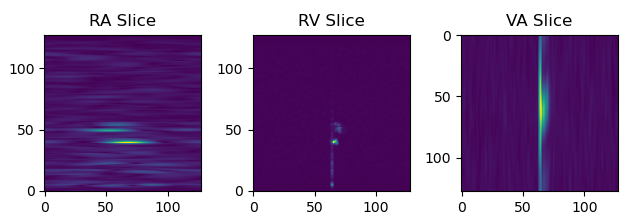Automotive Radar Object Recognition in the Bird-eye View Using Range-Velocity-Angle (RVA) Heatmap Sequences
RAMP-CNN: A Novel Neural Network for Enhanced Automotive Radar Object Recognition,
Xiangyu Gao, Guanbin Xing, Sumit Roy, and Hui Liu arXiv technical report (arXiv 2011.08981)
@ARTICLE{9249018, author={Gao, Xiangyu and Xing, Guanbin and Roy, Sumit and Liu, Hui},
journal={IEEE Sensors Journal},
title={RAMP-CNN: A Novel Neural Network for Enhanced Automotive Radar Object Recognition},
year={2021}, volume={21}, number={4}, pages={5119-5132}, doi={10.1109/JSEN.2020.3036047}}
(June 17, 2022) The input data for slice3d.py script has been changed to the raw ADC data now slice_sample_data.
Any questions or suggestions are welcome!
Xiangyu Gao xygao@uw.edu
Millimeter-wave radars are being increasingly integrated into commercial vehicles to support new advanced driver-assistance systems by enabling robust and high-performance object detection, localization, as well as recognition - a key component of new environmental perception. In this paper, we propose a novel radar multiple-perspectives convolutional neural network (RAMP-CNN) that extracts location and class of objects based on further processing of the rangevelocity-angle (RVA) heatmap sequences. To bypass the complexity of 4D convolutional neural networks, we propose to combine several lower-dimension NN models within our RAMP-CNN model that nonetheless approaches the performance upperbound with lower complexity. The extensive experiments show that the proposed RAMP-CNN model achieves better average recall and average precision than prior works in all testing scenarios. Besides, the RAMP-CNN model is validated to work robustly under the nighttime, which enables low-cost radars as a potential substitute for pure optical sensing under severe conditions.
All radar configurations and algorithm configurations are included in config.
Python 3.6, pytorch-1.5.1 (please refer to INSTALL to set up libraries.)
-
From below Google Drive link
https://drive.google.com/drive/folders/1TGW6BHi5EZsSCtTsJuwYIQVaIWjl8CLY?usp=sharing -
Decompress the downloaded files and relocate them as following directory manners:
'./template_files/slice_sample_data' './template_files/train_test_data' './results/C3D-20200904-001923'
For convenience, in the sample codes we use the raw ADC data of each frame as input and perform the Range, Velocity, and Angle FFT during the process of slicing. Run following codes for 3D slicing.
python slice3d.py
The slicing results are the RA slices, RV slices, and VA slices as shown in below figure.
- Prepare the input data (RA, RV, and VA slices) and ground truth confidence map for training and testing. Note that the provided training and testing data is in the post-3D slicing format, so you can skip the last step if you used provided data here:
python prepare_data.py -m train -dd './data/' python prepare_data.py -m test -dd './data/' - Run training:
You will get training outputs as follows:
python train_dop.py -m C3DNo data augmentation Number of sequences to train: 1 Training files length: 111 Window size: 16 Number of epoches: 100 Batch size: 3 Number of iterations in each epoch: 37 Cyclic learning rate epoch 1, iter 1: loss: 8441.85839844 | load time: 0.0571 | backward time: 3.1147 epoch 1, iter 2: loss: 8551.98437500 | load time: 0.0509 | backward time: 2.9038 epoch 1, iter 3: loss: 8019.63525391 | load time: 0.0531 | backward time: 2.9171 epoch 1, iter 4: loss: 8376.16015625 | load time: 0.0518 | backward time: 2.9146 ... - Run testing:
You will get testing outputs as follows:
python test.py -m C3D -md C3D-20200904-001923['2019_05_28_pm2s012'] 2019_05_28_pm2s012 Length of testing data: 443 loading time: 0.02 finished ra normalization finished v normalization Testing 2019_05_28_pm2s012/000000-000016... (0) 2019_05_28_pm2s012/0000000000.jpg inference finished in 0.6654 seconds. processing time: 0.98 loading time: 0.02 finished ra normalization finished v normalization Testing 2019_05_28_pm2s012/000002-000018... (0) 2019_05_28_pm2s012/0000000002.jpg inference finished in 0.4723 seconds. ... - Run evaluation:
You will get evaluation outputs as follows:
python evaluate.py -md C3D-20200904-001923true seq ./results/C3D-20200904-001923/2019_05_28_pm2s012/rod_res.txt Average Precision (AP) @[ OLS=0.50:0.90 ] = 0.9245 Average Recall (AR) @[ OLS=0.50:0.90 ] = 0.9701 pedestrian: 1930 dets, 1800 gts Average Precision (AP) @[ OLS=0.50:0.90 ] = 0.9245 Average Precision (AP) @[ OLS=0.50 ] = 0.9823 Average Precision (AP) @[ OLS=0.60 ] = 0.9823 Average Precision (AP) @[ OLS=0.70 ] = 0.9520 Average Precision (AP) @[ OLS=0.80 ] = 0.9234 Average Precision (AP) @[ OLS=0.90 ] = 0.7349 Average Recall (AR) @[ OLS=0.50:0.90 ] = 0.9701 Average Recall (AR) @[ OLS=0.50 ] = 1.0000 Average Recall (AR) @[ OLS=0.75 ] = 0.9850 ...
Run below codes to check the results of 3 proposed data augmentation algorithms: flip, range-translation, and angle-translation.
python data_aug.py
Below figure shows the performance of doing 10-bins range-translation (move upword), 25-degrees angle-translation (move rightword), and angle flip on original RA images. You may use this codes to develop your radar data augmentation and even generate new datas.
RAMP-CNN is release under MIT license (see LICENSE).
This project is not possible without multiple great opensourced codebases. We list some notable examples below.



